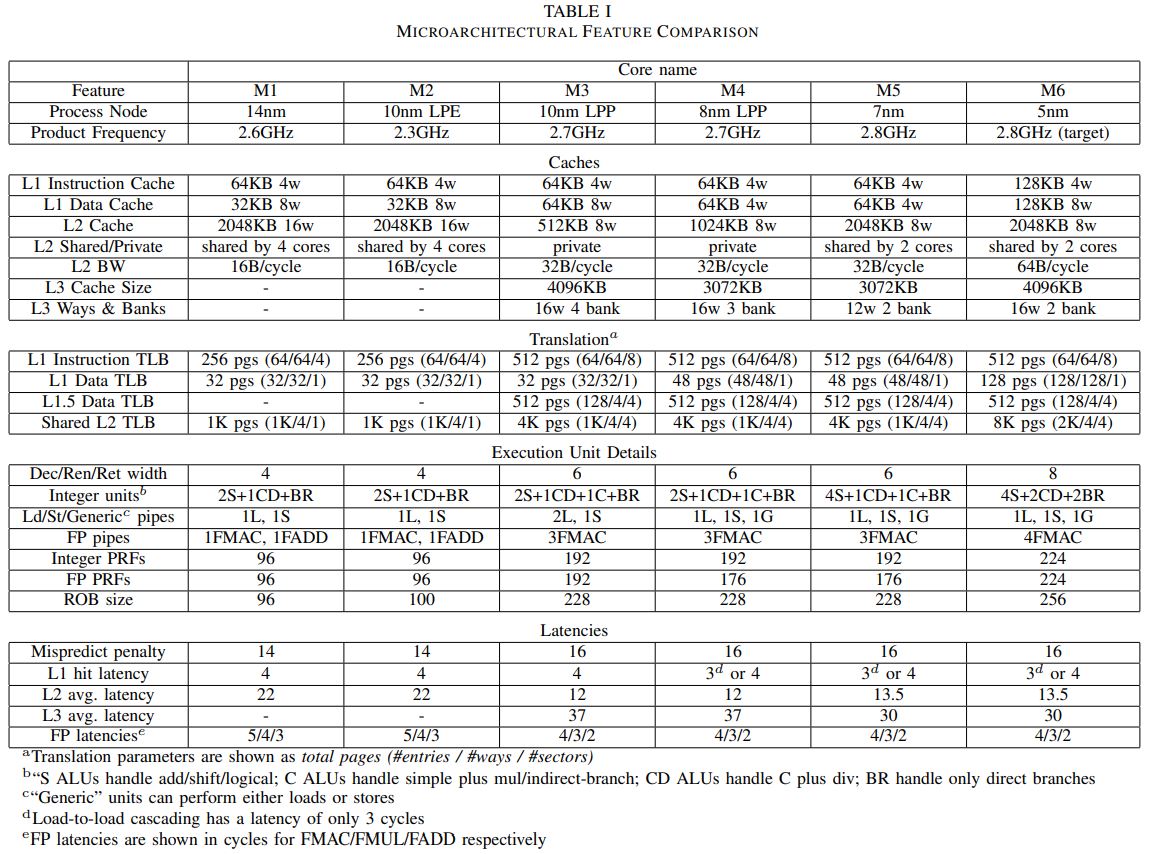
Samsung may have already shut down its CPU R&D teams in Austin and San Jose, but its custom Mongoose core isn’t dead and buried just yet. A paper recently published online by the Samsung Austin CPU team, titled Evolution of the Samsung Exynos CPU Microarchitecture, details the history of the M core and spills the beans on the as-yet-unreleased M6 CPU. It’s a heavy read but worthwhile if you want a closer look at Samsung’s CPU efforts over the past decade.
We don’t yet know the fate of Samsung’s M6 CPU. Although the design team has disbanded, CPUs are finished well ahead of silicon announcements and devices. It’s still possible that Samsung has one last Mongoose powered Exynos SoC up its sleeve, to be unveiled later in 2020 or early 2021. Or perhaps the company will quickly move on to Arm’s latest Cortex-A78 or Cortex-X1. We’ll just have to wait and see. Regardless, let’s take a quick look at the M6.
Opinion: Ditching custom CPUs is the right call for Samsung’s Exynos
So what do we know about the Samsung M6?

The paper contains everything you need to know about the M6, so I’ll keep the summary reasonably high-level. In a nutshell, the M6 is Samsung’s largest and most powerful CPU out of the bunch, as you might expect. It’s designed with a tiny 5nm manufacturing process in mind and a 2.8GHz frequency target.
The kicker though is a big 128KB L1 cache, 2MB shared L2, and 4MB L3 cache, giving each core much more memory to work with. The core packs in the execution capabilities too, with six basic math crunching units, two branch units, and four FMAC/FMUL/FADD units for heavy number crunching. The decode pipeline is 8 instructions wide, giving these units plenty to do with each clock cycle. The M6 also features a 50% larger, reworked branch predictor designed to accommodate changes in popular languages and programming styles.
Smartphone CPUs are becoming much bigger and more powerful to keep up with changing workloads.
The table below shows a vastly simplified comparison of these key CPU parts against the Apple A13 Lightning core and the Arm Cortex-X1. There are a number of noteworthy similarities here, showcasing the drive for more instructions per clock and increased parallelism. The bottom line is that the M6 is a big powerhouse core that goes even further than the M5 to drive single-threaded performance. Samsung is clearly taking aim at Apple’s performance level with the M6, but I don’t want to speculate about real-world performance here. And power efficiency is another matter entirely.
| Samsung M6 | Apple A13 Lightning Core | Arm Cortex-X1 | Arm Cortex-A77 | |
|---|---|---|---|---|
| Clock Speed | 2.8GHz | 2.66GHz | ~3.0GHz | ~2.8GHz |
| Logic Unit Count | 6x Arithmetic Logic Unit (ALU) 4x Floating Point (FP + FMAC) |
6x ALU 3x FP / Vector |
4x ALU 4x FP / SIMD |
4x ALU 2x FP / SIMD |
| Front-end dispatch/decode | 8-wide decode | 7-wide decode | 8-wide decode | 6-wide decode |
| L1 cache | 128KB | 128KB | 64KB | 64KB |
| L2 cache | 2MB (shared between 2 cores) | 8MB (shared) | 1MB | 512KB |
| L3 cache | 4MB (shared) | N/A | 8MB (shared) | 4MB (shared) |
Instead, this comparison highlights the need and drive for even higher performance in modern smartphones. Mobile use cases and workloads have changed and grown since the first-gen M1, with some applications requiring more instructions per clock for peak performance. This means wider pipelines with more execution units and thus more cache and smarter predictors to match. The end result is bigger, more expensive, and power-hungry CPU cores.
Related: Arm Cortex-X1 brings the fight to Apple’s powerhouse CPUs
In the paper, Samsung’s engineers note that the average number of instructions per cycle rose from just 1.06 with the M1 to 2.71 with the M6, a 20.6% growth rate each year. If you’re interested in how this influenced the evolution of Mongoose, the table below has a comprehensive progression breakdown of Samsung’s M cores.
What to expect from next Exynos flagship SoC
There’s more to a mobile chip than just the CPU, but Samsung’s next-gen Exynos remains virtually unknown at this point. Given the level of detail available about the M6, Samsung looks set to give Mongoose one last outing. But that could raise more controversy if the core disappoints like the M5 seen in some Galaxy S20 series variants. Likewise, enthusiasts could lament Samsung’s decision to close up shop if it’s a great CPU.
If the M6 is already canned, Samsung has plenty of choice for its next-gen SoC. The Arm Cortex-A78 is more energy efficient but doesn’t really fit the company’s design goals over the past decade. Instead, Arm’s Cortex-X1 CPU offers the single-core grunt Samsung has been after. But that’s only a possibility if Samsung is in Arm’s CXC program. On the GPU side, adopting the Mali-G78 seems like a given. Although a Samsung SoC with AMD graphics is anticipated sometime in 2021, which may coincide with the Galaxy S30 release schedule. There’s simply a huge range of possibilities.
Samsung has taken to releasing an upgraded Exynos chip with the Galaxy Note series and there is a 5nm design rumored to be in the works for the Samsung Galaxy Note 20 series. But the company usually refreshes its CPU cores on a yearly cycle. We’ll likely have to wait until Samsung’s 2021 Exynos version to find out the fate of the M6.
What’s next for Exynos: AMD hints at how RDNA could beat Qualcomm’s Adreno GPU



